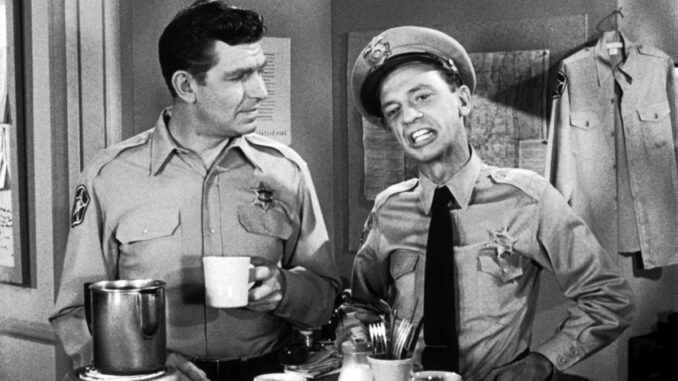
The Uncontrollable Giggles: Why Don Knotts Couldn't Stop Laughing During the "Pig in a Poke" Scene
Don Knotts, the master of comedic timing and perpetually flustered deputy, was a professional. He delivered lines with precision, contorted his face into expressions of sheer terror with theatrical brilliance, and generally embodied the lovable anxieties of Barney Fife. But even the most seasoned performer has their breaking point, a moment where the dam of self-control bursts and the laughter comes flooding out. For Knotts, one such moment occurred during the filming of the classic "Andy Saves Barney" episode, specifically the scene involving a pig, a burlap sack, and a whole lot of hay. The "Pig in a Poke" scene, as it came to be known, became notorious not just for its comedic brilliance, but for the behind-the-scenes struggle against uncontrollable giggles.
The premise itself was ripe for hilarity. Andy, wanting to teach Barney a lesson about buying things without inspecting them, tricks him into purchasing what he believes to be a valuable antique dresser, only to reveal that it contains nothing but a squealing pig. The initial reveal, with the squealing and wriggling coming from inside the sack, was already a challenge for Knotts, whose inherent comedic instinct thrived on physical comedy and unexpected situations. But the real trouble began when Andy decided to amplify the humiliation by throwing a bale of hay on top of the "dresser," trapping Barney even further.
The image of Knotts, already red-faced and sputtering from the porcine surprise, buried under a haystack, proved simply too much. According to accounts from cast and crew, the first take dissolved into chaos as Knotts, muffled beneath the hay, started to giggle uncontrollably. His shoulders shook, and the bale of hay seemed to vibrate with his suppressed laughter. Andy Griffith, ever the professional, attempted to maintain his composure, but even he was visibly struggling to keep a straight face. The cameras rolled, capturing not the intended comedic frustration, but a genuine, infectious mirth that threatened to derail the entire scene.
Several factors contributed to Knotts' inability to contain himself. Firstly, the absurdity of the situation was inherently funny. The image of a grown man being tricked into buying a pig, then buried under hay, bordered on the surreal. This inherent absurdity, amplified by Knotts' physical performance, was a potent catalyst for laughter. Secondly, the physical proximity to the pig itself, with its unpredictable snorts and movements, added an element of genuine chaos that was difficult to ignore. Knotts, always hyper-aware of his surroundings and the comedic possibilities within them, couldn't resist reacting to the animal's antics.
Finally, there was the sheer weight of the hay. The feeling of being physically overwhelmed, of being buried alive in a fragrant mountain of straw, likely triggered a physical reaction that amplified the comedic effect. It was a primal, almost childish scenario, reminiscent of being buried in sand at the beach, and it unleashed a wave of childlike glee that Knotts, despite his best efforts, simply couldn't suppress.
The crew tried everything to help him regain composure. Griffith told jokes, trying to "get it all out" before the next take. The director repositioned the hay bale, hoping to lessen the physical discomfort. Nothing seemed to work. Every time the scene was reset, the mere sight of the pig and the hay would send Knotts into another fit of giggles.
Ultimately, they had to resort to creative editing. The final scene in the episode features strategically placed cuts and camera angles, masking the moments when Knotts was visibly struggling to maintain his composure. The audience sees Barney’s indignant sputtering and frustrated flailing, but what they don't see is the actor behind the character, desperately trying not to laugh.
The "Pig in a Poke" scene became legendary not just for its inherent humor, but for the story behind it. It serves as a testament to the contagious power of laughter and the sheer absurdity of life. It also highlights the human side of Don Knotts, reminding us that even the most seasoned comedic performers are susceptible to the simple, irresistible joy of a good laugh. In the end, perhaps it was that very genuine, uncontrollable laughter that made the scene so memorable, adding an extra layer of authenticity and charm to an already iconic moment in television history. It was a reminder that sometimes, the best comedy comes not from perfection, but from the unscripted, unpredictable joy of shared laughter.
